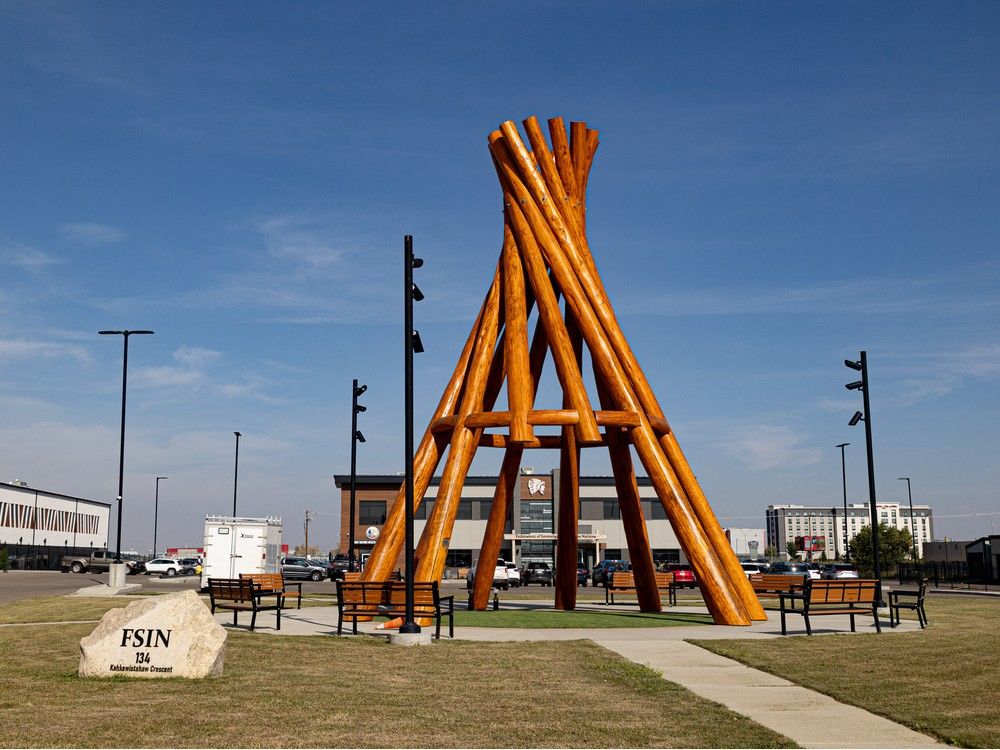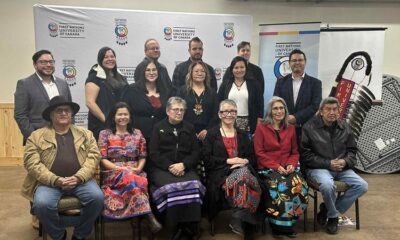Education
First Nations University Faces Governance Challenges, Calls for Reform

The ongoing governance issues at the First Nations University of Canada highlight a systemic problem rooted in the interplay between administration and politics. This situation is not isolated; it reflects a broader challenge faced by educational institutions in Indian Country, where political leadership often overshadows effective governance.
Historically, the Federation of Sovereign Indigenous Nations (FSIN) established three educational institutions in the 1970s, designed to be managed by boards of directors composed of chiefs. The intention was clear: chiefs would create policies and provide a vision for the institutions while day-to-day operations would be handled by internal staff. Almost five decades later, this model remains unchanged, with chiefs still dominating the governance of institutions such as the Saskatchewan Indigenous Cultural Centre and the Saskatchewan Indigenous Institute of Technologies.
Understanding the historical context is essential to grasp the current dynamics. When treaties were signed, they legitimized the role of chiefs, but subsequent governmental control marginalized their influence. John B. Tootoosis and Walter Dieter were pivotal in helping First Nations establish elected leadership, counteracting the overreach of Indian agents, who often acted as de facto chiefs. Strengthening the power of chiefs aimed to restore traditional leadership roles, yet the government gradually shifted their responsibilities towards administrative functions.
An elder once remarked that as chiefs took on more administrative duties, they risked becoming akin to Indian agents themselves. Today, many chiefs find themselves in a neocolonial position, managing resources and making decisions that ultimately serve governmental interests rather than those of their communities. While they bear the weight of responsibility in funding agreements, the true authority often lies with external agencies, leaving chiefs as mere conduits for government directives.
The FSIN must confront this drift towards neocolonialism, particularly within its own institutions. The current structure, where boards are dominated by chiefs, does not facilitate the necessary change. In 2009, regulatory changes mandated a restructuring of the First Nations University board to secure funding. Yet, by 2022, the FSIN reversed this decision, allowing chiefs to reclaim board positions without consultation from funding bodies.
Reflecting on past leadership, Doug Cuthand, an Indigenous affairs columnist and member of the Little Pine First Nation, notes that during earlier meetings, chiefs were not burdened by administrative roles. They passionately articulated issues faced by their communities. Today, with the government controlling funding, the urgency for protest and advocacy has diminished.
Cuthand emphasises that democracy thrives on the free exchange of ideas among elected and unelected leaders alike. Traditional governance structures relied on diverse voices, including elders, caregivers, and youth. To find sustainable solutions, communities should look to their history for guidance.
Addressing these governance challenges is critical for the future of Indigenous education in Canada. The transformation of leadership structures within these institutions could provide a pathway to genuine empowerment and effective change, ensuring that the needs of Indigenous communities are met with integrity and respect.
-

 Politics4 weeks ago
Politics4 weeks agoSecwepemc First Nation Seeks Aboriginal Title Over Kamloops Area
-

 World5 months ago
World5 months agoScientists Unearth Ancient Antarctic Ice to Unlock Climate Secrets
-

 Entertainment5 months ago
Entertainment5 months agoTrump and McCormick to Announce $70 Billion Energy Investments
-

 Science5 months ago
Science5 months agoFour Astronauts Return to Earth After International Space Station Mission
-

 Lifestyle5 months ago
Lifestyle5 months agoTransLink Launches Food Truck Program to Boost Revenue in Vancouver
-

 Technology3 months ago
Technology3 months agoApple Notes Enhances Functionality with Markdown Support in macOS 26
-

 Lifestyle3 months ago
Lifestyle3 months agoManitoba’s Burger Champion Shines Again Amid Dining Innovations
-

 Top Stories2 months ago
Top Stories2 months agoUrgent Update: Fatal Crash on Highway 99 Claims Life of Pitt Meadows Man
-

 Politics4 months ago
Politics4 months agoUkrainian Tennis Star Elina Svitolina Faces Death Threats Online
-

 Sports5 months ago
Sports5 months agoSearch Underway for Missing Hunter Amid Hokkaido Bear Emergency
-

 Politics5 months ago
Politics5 months agoCarney Engages First Nations Leaders at Development Law Summit
-

 Technology5 months ago
Technology5 months agoFrosthaven Launches Early Access on July 31, 2025















